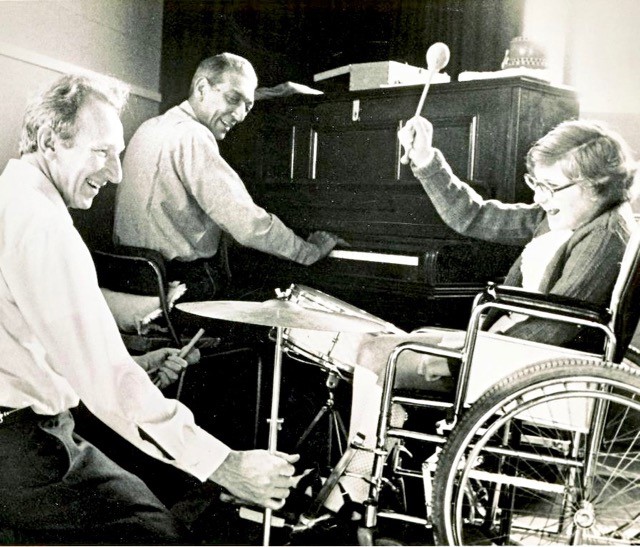It is known that music, be it through rhythm or singing, developed in early human societies well before language. Evolutionary musicologists hypothesize that it acts not only as a form of communication, but also fosters social connection and comradery in their community. Hundreds of years later, we find that same comradery through making music together in bands and choirs, or sharing musical experiences at live concerts.
Consider the role music plays in child development. Mothers have always sung to their babies—it’s an innate thing to do. Evidence shows this behavior is significant in the development of the child’s linguistic skills. Now backed up by evidence-based research, the music therapy profession was literally centuries in the making.
Music Therapy’s Early Days
Early evidence of music being used therapeutically echoes throughout the ages. Below are some examples that show just how far back the roots of the practice go, and how they evolved into the 20th century:
- Plato said music is essential in forming one’s personality.
- In his writings, Aristotle emphasized the ability for music to release individuals from negative emotions.
- In 1560 Constantinople, where the first psychiatric hospitals were developed, music was used in the treatment of patients.
- In 1789, an article was published in Columbian Magazine titled “Music Physically Considered”. This was the first publication to suggest music as a strategy to achieve medical goals.
- After World War 1 and WWII, community musicians traveled to Veterans’ hospitals to offer relief from the physical and psychological pain soldiers were suffering from.
- The earliest music therapy associations were formed by women. The first was founded in 1903 by Eva Augusta Vescelius (the National Society of Musical Therapeutics), a second in 1926 by Isa Maud (the National Association for Music in Hospitals), and in 1941 by Harriett Ayer Seymour (the National Foundation for Music Therapy).
Early Professional Organizations
As music therapy evolved into a profession, it became necessary to create laws, guidelines, and universal standards for practicing therapists. In 1950 the National Association for Music Therapy (NAMT) was founded with only a few dozen professionals involved. The founding of NAMT was a significant milestone in many ways. It unified the profession under an umbrella of practices, and led to the development of the first board certification program. In 1971, The American Association for Music Therapy (AAMT) followed as a second organization known for publishing research in its journal Music Therapy.
The American Music Therapy Association was formed in 1998 and combined NAMT and AAMT. As stated on the AMTA website: The mission of the American Music Therapy Association is to advance public knowledge of the benefits of music therapy and to increase access to quality music therapy services in a rapidly changing world.
An Ever-Changing Field
Music therapists value research and evidence-based practice. Our understanding of music therapy is constantly evolving, as science and medicine discover more and more about the way music interacts with the human brain. Unlike the community musicians of the early 20th century, professionals today must achieve a myriad of competencies, maintain board certification, and sustain continuing education hours throughout their professional years.
Regardless of how the music therapy profession has changed, the same truths ring true as the early days of its conception: Music is a powerful tool. It can be used to assist in learning, as well as medically and psychologically – a truth that’s proven time and time again throughout our history books.
Works Cited
Dobrzynska, E., Cesarz, H., Rymaszewska, J., & Kiejna, A. (2006). Music therapy–History, definitions and application. Arch Psychiatry Psychotherapy, 8, 47-52.
History of Music Therapy. (2020). Retrieved December 3, 2020, from https://www.musictherapy.org/about/history/
Thompson, W. F. (2015). Music, thought, and feeling: Understanding the psychology of music. Oxford university press.
Blog post written by Katie Pistilli, MT-BC

